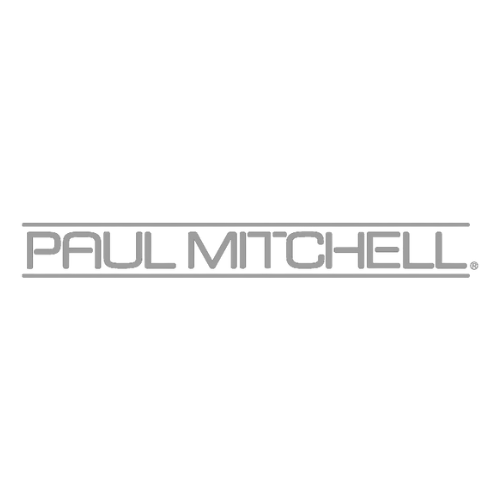When you leave your locks to airdry, do you notice small kinks and waves forming? It’s not your imagination, and you’re not alone either! If you’ve browsed TikTok recently, you might have noticed the trend of ladies discovering their waves after believing their hair texture is straight.
For the convenience of marketing products, we have been conditioned to believe that if you don’t have coily hair, this means your hair is straight. However, this isn’t the case anymore. Now, is the time to learn your true hair texture and how to take care of it, for healthy and happy strands.
Hair loss and greying aren’t the only changes our hair can experience as we age. Over time, the texture of your hair can also alter. While this is true of some women, others may be blissfully unaware that their hair texture has been wavy since birth. Either way, your troublesome hair could just need a helping hand and a few extra steps to bring out those luscious waves.
How To Tell If My Is Hair Straight Or Wavy?
As mentioned above, airdrying your hair is a great way to determine your hair type. To do this:
1. Wash your hair as you normally would.
2. When conditioned, gently comb through your wet hair to relieve any tangles and then wash out the conditioner.
3. Softly dry or wrap your wet hair in a microfibre towel for around 10-15 minutes, unravel, and let your hair airdry throughout the day without touching it.
Those with straight hair have hair that air dries completely straight without the intervention of products or a straightener.
Those with wavy hair will notice that their hair doesn’t airdry fully straight or only dries straight in certain areas, needing a straightener to touch up certain sections.
Types Of Wavy Hair
Now that you’ve discovered your wavy hair, it’s time to know what type of waves you’re sporting. To help determine your hair type, there are four main categories: Straight, wavy, curly and coily. Each of these categories have three types to best describe the look of your strands.
If you’re not sure what your hair type is, let’s break down each category, focusing on waves.
Wavy 2A
Type 2A hair typically lies flat at the roots and starts to form waves around your eye level. This gradual change in texture can sometimes make your hair look inconsistent. Therefore, those with this wave type may be tempted with straighteners to “fix” their hair.
2A waves types will notice a soft ‘S’ shaped pattern in their strands. This will present as soft bends and waves, occurring on finer hair that lacks volume. Because of this, it can be harder to form well-defined waves that last. You may also notice that heavy products rich in moisture weigh down your waves.
To style 2A hair, we recommend using texturising or wave defining products. For finer hair types that get oily quickly, dry shampoo can help to provide an added lift at the root and mask natural oils.
Sea salt texturising sprays are perfect for finer wave types, helping to encourage and define without weighing down a wave. Sea salt sprays also plump and expand hair fibres, giving the appearance of thicker, more voluminous hair.
Opt for a one-length cut to bring out the best of your 2A waves. Since the roots and ends of 2A hair can vary in degree of waviness, it can be difficult to achieve a cohesive look. Because of this, haircuts with lots of layers may further accentuate the unevenness of your 2A hair. In contrast, the unity of a blunter cut can help you regain control of your soft silky waves.
Wavy 2B
Like 2A waves, 2B hair types also have an ‘S’ pattern. However, it is more defined and prominent. 2B hair is widely recognised as prone to frizz and poofy ends if not looked after properly. 2B hair types will typically have thicker and denser strands.
Straightening 2B requires a little more effort. Unlike type 2A waves, running a brush through your hair to make it straight isn’t an option. Brushing 2B hair will likely cause frizz that will need styling intervention to reverse.
The farther your hair texture is from straight, the more prone it will be to frizz. With 2B hair types, where there is frizz there is dryness. 2B hair experiences dryness and frizz because the hair has high porosity, meaning that it takes in more liquid than it absorbs.
To bring out the beauty of your 2B hair, choose products that boost moisture and help define your waves. For example, a sulfate-free shampoo and conditioner that provides hydration and gentle scalp cleansing without stripping away natural oils. A lightweight leave-in conditioner can also boost moisture by hydrating your ends and locking in moisture until your next hair wash day.
Incorporating layers into your waves can be flattering if you have 2B hair with medium to thick hair density. Layers remove your hair’s weight and lend movement and dimension to waves. Long, face-framing, and even heavily layered cuts are all great options.
Wavy 2C
2C hair types still have a prominent “S” pattern. However, this hair type can share similarities with the first curly hair type, 3A.
Those with 2C waves can often be confused if their hair is wavy or closer to curly. 2C hair contains a few spiral curls among its waves, with a coarser, rougher texture. Yet this wave type can often lose definition due to intense frizz.
2C hair shares more similarities with curly hair than straight hair. Using a curl cream will bring definition back into your hair, eliminating frizz and defining your waves. When looking for products that work well with your thicker, wavier locks, focus on gentle cleansing and hydrating shampoos and conditioners. Less is more with type 2C hair, so avoid all the heavy add-ins after showering. Instead, try using nourishing oils like argan, coconut or olive oil as leave in treatments before washing.
One of the best styling tips for type 2c hair is to use a diffuser. This method works well to define waves and curls while bringing bounce to your hair. You may notice that regular blow-drying or airdrying can cause your hair to be dragged down by the water as it dries, flattening your curl pattern. Diffusing removes moisture evenly, drying hair faster but maintaining bounce, waves, and curls.
Much like 2C hair adding layers to your waves/curls is extremely flattering. The layers will remove your hair’s weight, creating movement and body.
Look After Your Waves With Belle Amour
If you have any questions on how to look after your wavy hair, please do not hesitate to get in touch with Belle Amour.
Based in Bagshot, our salon is easily accessible to those in Ascot, Camberley, Chobham or the surrounding Surrey areas. We would love to help you along your hair care journey, helping you learn how to look after your luscious waves.





